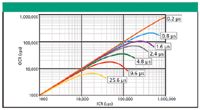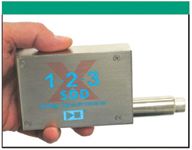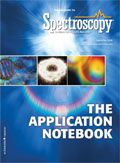Advantages of Silicon Drift Detectors
The availability of new silicon drift detectors (SDD) allows for more precise measurements in less acquisition time. SDDs are often praised for their excellent energy resolution, but it is their increased throughput that make them ideal for many industrial applications. Due to the detector's smaller capacitance, a much shorter peaking time is used in the shaping amplifier without sacrificing resolution. This dramatically increases the throughput of the system. Compared with a conventional Si-PIN detector where the peaking time is as long as 25 ms, the drift detector operates at 1.6 ms, thereby increasing throughput from 10,000 counts per second to over 100,000. This advantage can be used in two primary ways.
The availability of new silicon drift detectors (SDD) allows for more precise measurements in less acquisition time. SDDs are often praised for their excellent energy resolution, but it is their increased throughput that make them ideal for many industrial applications. Due to the detector's smaller capacitance, a much shorter peaking time is used in the shaping amplifier without sacrificing resolution. This dramatically increases the throughput of the system. Compared with a conventional Si-PIN detector where the peaking time is as long as 25 ms, the drift detector operates at 1.6 ms, thereby increasing throughput from 10,000 counts per second to over 100,000. This advantage can be used in two primary ways.

Figure 1: Throughput with the silicon drift detector.
First, the same acquisition time can be used as with the conventional detector. Since a faster peaking time is used, the flux of the x-ray tube can be increased without affecting the dead time of the system. In the same acquisition interval many more counts are accumulated. The final result will be a more precise, statistically relevant spectrum. Trace elements and elements hidden in the background can now also be identified.
Second, if more rapid measurements are necessary but not increased precision or trace analysis, the acquisition time can be made much shorter. The shorter peaking time again allows for an increase in x-ray tube flux and therefore good statistics in the spectrum despite the shorter accumulation time. This makes this detector ideal for online processing applications where measurement intervals can be sub second. It is also useful in situations where the sample number is high. Now many more analysis can be conducted in the same work time.

Figure 2: Amptek X-123SDD.
The detector is housed inside the same TO-8 package as Amptek's other detectors, so its form-factor is a direct replacement for current systems. The X-123SDD configuration contains the complete spectrometer: detector, preamplifier, digital processor, and power supplies. The X-123 connects via USB or RS232 and only needs a +5VDC power input (AC adapter included). The X-123SDD is ideal for high speed OEM applications with fast entry to the market.

Amptek, Inc.
14 Deangelo Drive
Bedford, MA 01730
Tel. (781) 275-2242, Fax (781) 275-3470

Enhancing Trace Element Analysis with Inductively Coupled Plasma Mass Spectrometry
May 15th 2025Elemental analysis is crucial in a wide variety of applications from detecting toxic elements within the environment, to ensuring drinking water is safe for human consumption, to food product safety. ICP-MS—able to measure an atom’s mass—offers low detection limits in the range of parts per trillion (ppt), making it a widely used method that can detect toxic elements well below regulatory limits. This paper expands upon how new ICP-MS technology can meet the challenges associated with heightened demands for element analysis and the hurdles laboratories face when analyzing high-matrix samples.

.png&w=3840&q=75)

.png&w=3840&q=75)



.png&w=3840&q=75)



.png&w=3840&q=75)

